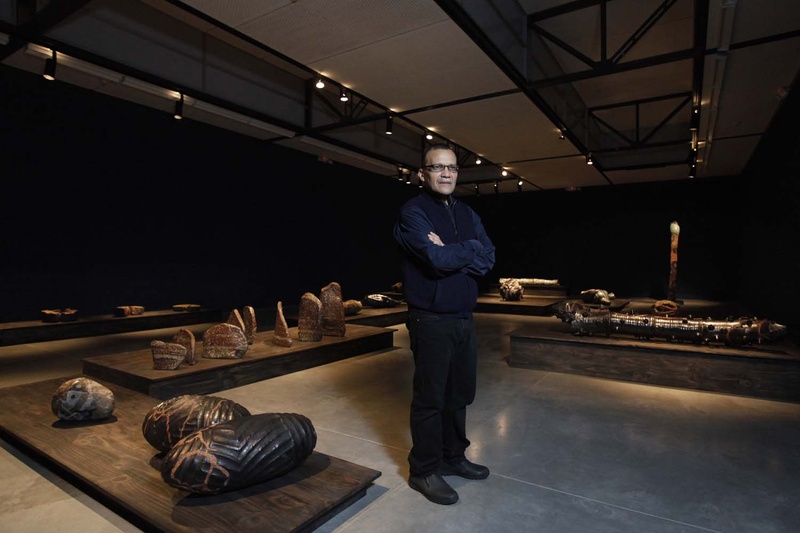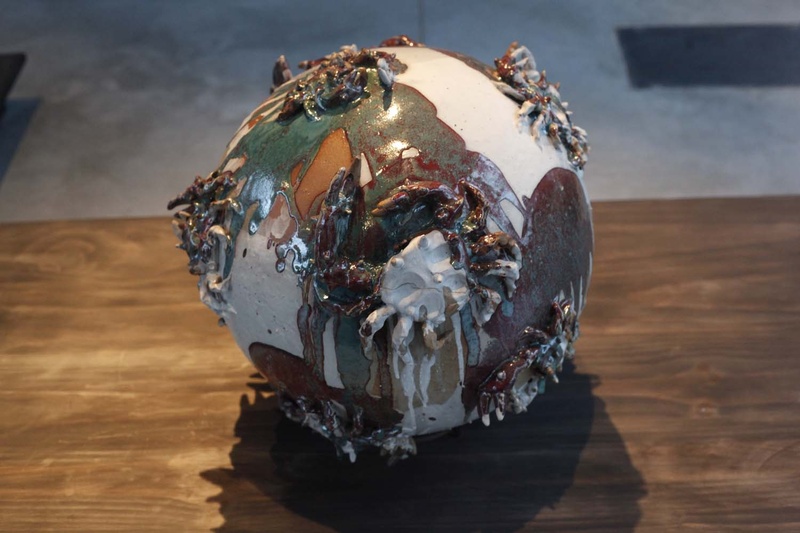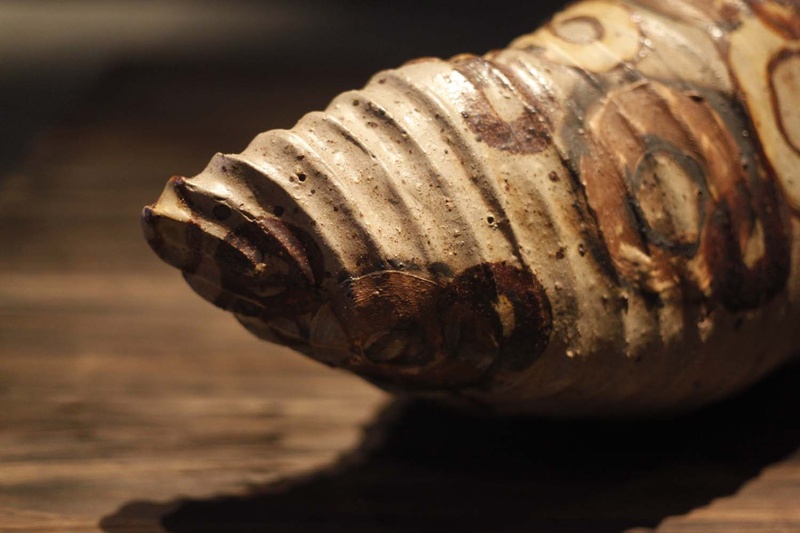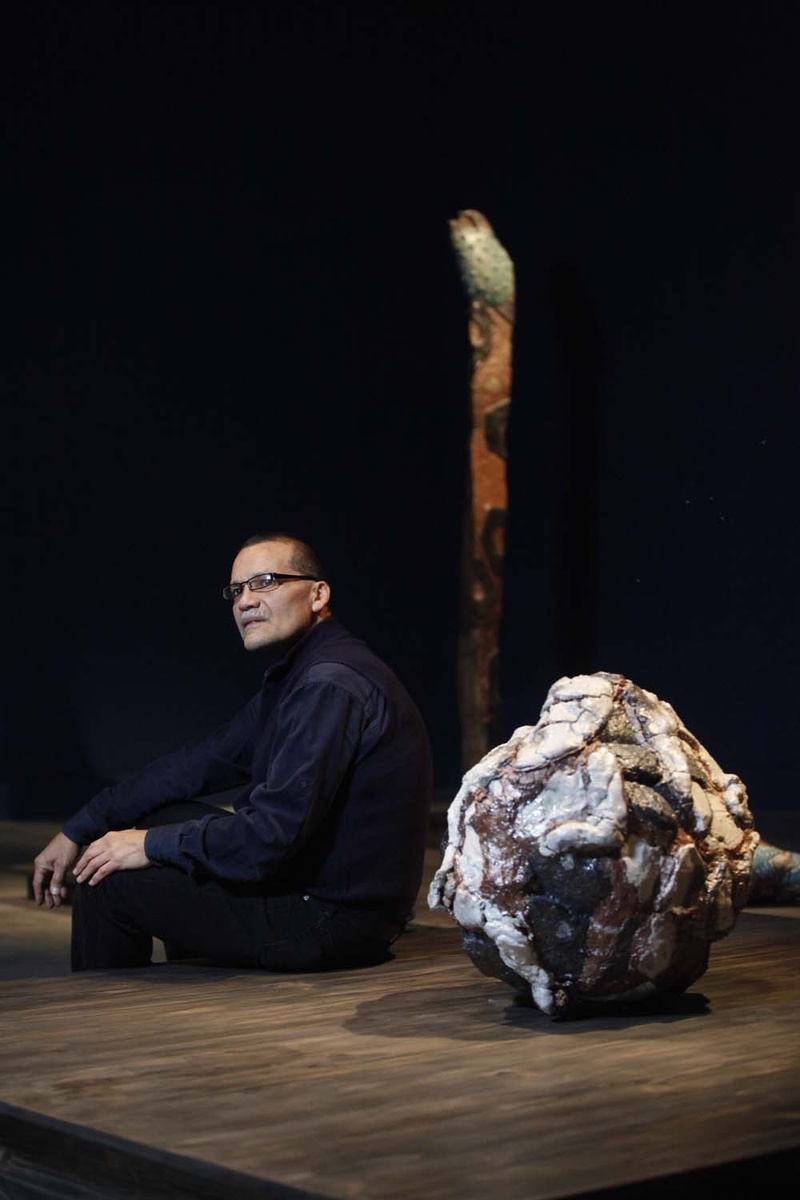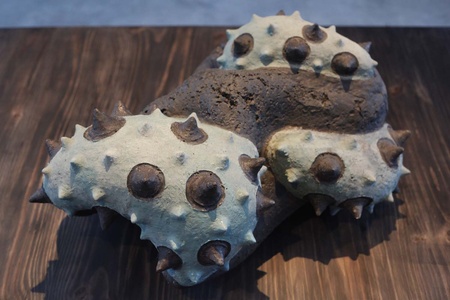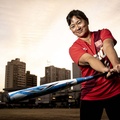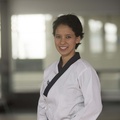Carlos Runcie Tanaka says that he prefers to mold clay to say the things that happen to him as a human being. However, despite denying it, he is able to express himself with words, almost as if he were reciting. His words have a cadence and there are silences that speak to us of a reflective being, but also of a man with an inner volcano that is his own existence, the product of the meeting of two family trunks born from a Japanese grandfather and an English one.
“These two islands, Japan and England, the only thing they could create in Peru is a volcano,” he laughs. Since he was a child, Carlos was attracted to music, author's music, melodic music, and British and American folk rock from the 1960s and 1970s. His connection with Japan came shortly after. Since his Japanese grandfather died at the age of 36, when his mother was just four, he had no further contact with Japanese culture until at the age of 18 he decided to go to Japan to become an apprentice to a Japanese ceramist, after abandoning his studies. of philosophy at the PUCP and opted for ceramics.
“Basically I didn't speak, I sang the things that life suggested to me. I think that this inclination for music was transferred to the hand, to gestures, and that philosophy ended up being a good training base for when I opted for ceramics. I left university and asked my parents for permission to do a ceramics workshop at home. I worked here for a while and then in a ceramics workshop, the Pingüino. “Then I had the opportunity to meet a Japanese teacher.” The empathy was immediate and the teacher invited him to Japan to be his disciple. “Give me some time to prepare for you,” he asked.
Shortly after, he traveled to Japan and learned to survive alone in the countryside, working with clay with this teacher. It took just over two years in which he learned the trade, but he also recognized his Japanese side. "I learned to survive and after almost a year the teacher told me: 'You have not come to be an apprentice, you are one more like us.' And I stopped being an apprentice in the last part of the stay. They even offered to help me do a workshop, but I decided not to stay. My teacher told me: 'I chose you in Lima, but you already had a path. He, (Masahiko Tsukimura) like me, did heartbreaking things. “We both opted for a different strength.”
He returned to Peru and then spent four years in Italy thanks to a scholarship. His work has been influenced by the Peruvian pre-Hispanic. “Pre-Hispanic Peru left a strong mark on me since childhood. Since I was a child I was fascinated by the magic of museums, I belonged to the archeology club at school.”
Perhaps that is why he chose ceramics as a link with a living past. At the time he was impacted by the British Bernard Leach and the Japanese Shoji Hamada, who from their respective experiences sought a return to traditional ceramics, to manual, personalized production. “This movement of taking back the heart, the hand and the head impacts me. And I choose ceramics as a way of life.”
LIKE THE TRUSSES OF A PREHISPANIC LORD
He recently exhibited the anthological exhibition “Litoral” at the MAC, “a current look at a work over the years, but which has an interesting outcome linked to the need to return to the profession.”
In this adventure, as in many others throughout his career as an artist, he was accompanied as curator by critic Jorge Villacorta. “It is a very special selection taking the words of the curator himself, a great friend since I was eight years old who has accompanied me in almost all my projects. It is a strong and intense friendship and he is perhaps the person who best understands my work.”
“Litoral” is a “limited and succinct” selection that implies “a return to staging and showing the public a ceramic without greater artifice than the placing of the pieces as such on those very clean platforms that recall the Japanese aesthetics and the craft. of the artist.”
The exhibition included works created by Runcie between 1987 and 2017. Among them, two new pieces “that are interesting because they make me see the need to return to the profession.”
And that return to the craft is what he is doing at this moment, being aware that these pieces are part of a larger set that is his own trousseau. “They are accumulated pieces, like the trousseau of a pre-Hispanic lord. We decided that we should show the ceramist who struggled with those pieces and who have been with me since their creation because I decided not to let them go.”
REVALUING CERAMIC
For many years Runcie has fought to position ceramics alongside the other arts, as equals. He feels that in the last 20 years ceramics has not had the weight in Peru that it had a few years ago when masters such as Félix Oliva and Carlos Bernasconi, among others, had a place in national art.
Then the question appears: “Have you had disciples?” He responds: “I have had students and I would have liked them to continue, but they couldn't keep up. There will be about five or six people to whom I have tried to provide the information that I had. One of them is Ignacio Guzmán, a professor at the Catholic University who I would like to see more of in performance, I would like to see more of his works. What does happen is that he has influenced several students and some interesting ceramic workshops have been opened.”
What happens with ceramics is that “you need a level of research, a reflection on the material, you have to break yourself.” That must be reflected in the work. “I am interested in a reflection on the craft, an intellectual level that is felt when you see the works, and the same in the dishes. There are people who tell me 'I can't eat off your plates because they are telling me something'. There are things written.”
Carlos summarizes that his search may be linked to “the difference in cultural matrices and a desperation to belong to Peru, although sometimes Japan beats me in my training in ceramics and the British in my music.”
In addition to this return to the craft, the artist is determined to promote the creation of a ceramics school and seek unity and dissemination of the work of ceramists through a group on social networks.
* This article is published thanks to the agreement between the Peruvian Japanese Association (APJ) and the Discover Nikkei Project. Article originally published in Kaikan magazine No. 110, and adapted for Discover Nikkei.
© 2017 Texto y fotos: Asociación Peruano Japonesa



